One More Step to Go!
We have also sent a verification link to your email ID:
qabuyer@droom.in
Please verify your email account
The Triumph Tiger 800 XRx and the Ducati Multistrada 950 are capable, purpose-built adventure touring machines, and this is a category that has practically taken off in India. The Multistrada 950, which was launched internationally late last year has finally made its way to India and it’s looking at shaking up the mid-capacity adventure-tourer space.

Both bikes are quite attractive - the Tiger's design looks extremely industrial in nature and while some might love the unintimidating proportions of the Tiger, there are a lot of folk who want that ‘big-bike’ look, and may shy away from this bike. The Multistrada features Panigale-style headlights perch over a ‘beak’ that doubles as the air intake, while the large shrouds flanking the massive radiator give the Multistrada a menacing width. The Multistrada’s stance feels a lot bigger than the Tiger’s – it sometimes resembles a large bird of prey. As far as design is concerned, it’s nearly identical to its larger sibling, the Multistrada 1200, which adds to its overall appeal.
Despite the Multistrada size, when you actually hop on, it feels quite slim under you. While the front end does look bulky, the handlebars don't need a big stretch to reach and they're tall and wide enough. The curved rider’s seat, at 840mm, shouldn't be an issue for anyone who’s of average height or taller. The Tiger feels like a much easier bike once you hop on - the seat height is extremely low, at just 810mm (minimum), and you sit slightly farther away from the relatively low set handlebars. You sat much farther back on this bike than the Multistrada though.
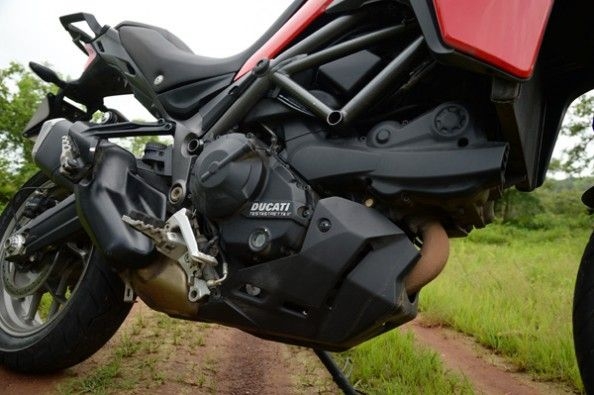
The Tiger is powered by an 800cc motor, with 95hp and 78Nm, and while it isn’t a particularly powerful motor, especially when compared to the Multistrada’s 937cc L-twin from the Hypermotard. The Ducati’s engine, which puts out 113hp and 96Nm, is around 20 percent more power and torque than the Triumph. Naturally, the Multistrada’s extra performance over the Tiger is more than noticeable, especially when you give it a real go. While the Triumph doesn’t accelerate as quickly as the Ducati does, it’s much easier to ride. At slow speeds, you can stay on higher gears – you can stay in fifth or sixth gear even on city roads. When you push the Tiger, it is exciting to ride, but not as much fun as the Multistrada.
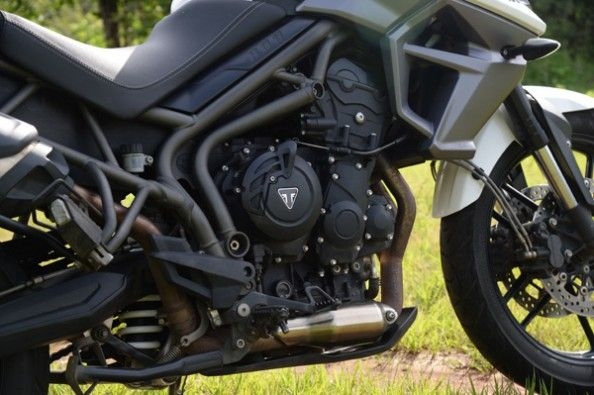
Both bikes come fitted with six-speed gearboxes, but the Ducati’s requires a bit of force to engage. The harder shifts and heavier clutch can be cumbersome in heavy traffic. The Tiger’s clutch lever feels lighter and the gearbox shifts precisely. The Tiger feels a lot easier to manage in the city, while out on the highway, it’s a completely relaxing experience. The Multistrada simply doesn’t have the plushness that the Tiger affords. On the Ducati, you need to stand on the foot pegs if you have to ride over broken surfaces to be comfrotable.
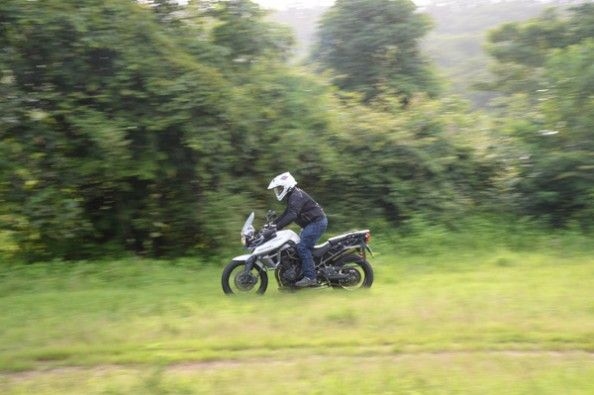
Taking two 200-plus kilo adventure bikes off the beaten path isn’t easy, for an amateur, the Tiger feels easier to ride on the dirt. It’s over four kilos lighter than the Multistrada and it feels more manageable. The lower seat height allows you to put your foot down much easier. Much like the Tiger, the Multistrada runs off-road friendly 19-front and 17-inch rear wheel sizes, but still feels a lot more top-heavy and cumbersome on loose surfaces. However, with an expert rider in the saddle, the Multistrada will hold its own over most terrain.

These machines offer a bevy of electronic riding aids. The Multistrada 950 comes with eight-level traction control and a three-level ABS, along with four riding modes – Sport, Touring, Urban and Enduro with varying levels of traction and brake settings. The Tiger uses ride-by-wire throttle along with three riding modes – Road, Off-road and Rider. The ABS and traction control system are switchable as well.

The Multistrada 950 is a more manageable version of its larger sibling, the Multistrada 1200 and while the Tiger cannot match the Multistrada for its sharpness up a mountain road, it’s much easier to pilot. The Triumph is no slouch either - it blasts through bad roads, and is a comfortable highway bike as well. The Triump is a true all-rounder and lives up to its ‘adventure-tourer’ tag. At ₹12.13 lakh (ex-showroom, India), it is also almost ₹70,000 cheaper than the Multistrada 950 (₹12.82 lakh ex-showroom, India).

Triumph launched its new hardcore Scrambler 1200 XC in India at Rs 10.73 lakhs, to give chance to the bike enthusiasts to ride.
Read More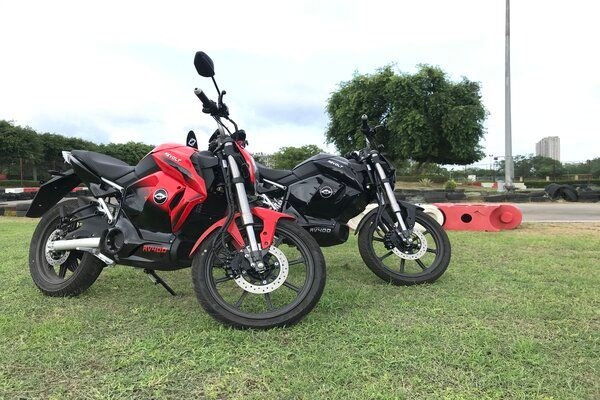
The Revolt RV looks like any other modern-day bike in the market. Revolt has chosen not to give it a conventional electric bike looks.
Read More
Triumph Motorcycles has its strategy sorted for India’s premium motorcycling segment. It is taking a step by step approach and does not mind experimenting with segments.
Read More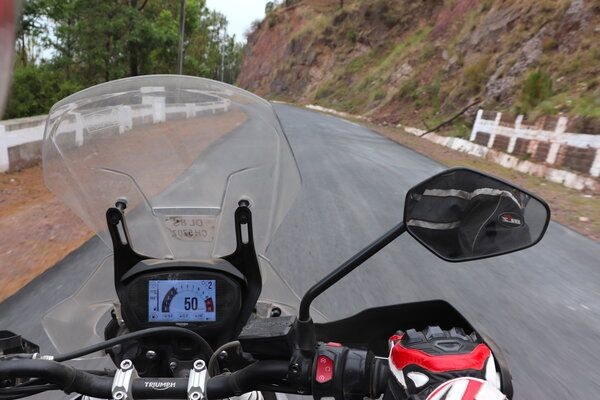
We take Triumph Tiger 800 xRx for a long ride through trails and twisties of Himachal Pradesh. Know how this 800-cc motorcycle performs in the lap of Himalayas.
Read More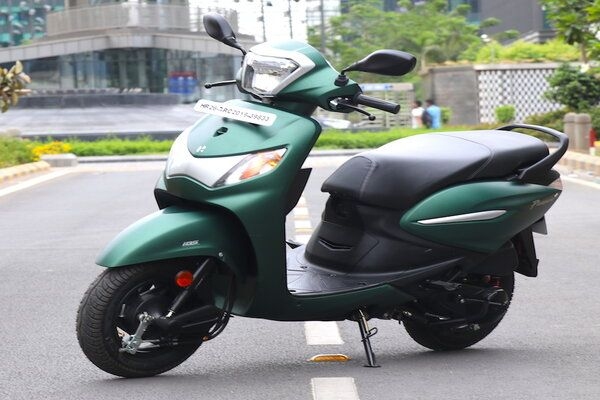
The Pleasure Plus gets an entirely new design theme and an uber retro touch that the new headlamp lends. It is an affordable yet chic looking scooter in its segment.
Read More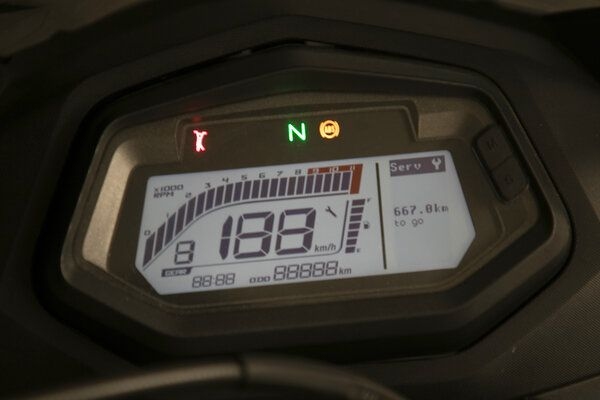
Hero has launched the fully-faired avatar of the Xtreme 200R in the form of Xtreme 200S. We got a chance to ride the same at the Buddh International Circuit and here is what we think about this new bike in the 200-cc club.
Read More
The CBR500R is a middle-weight performance motorcycle from Honda.
Read More
The CB1100 RS from Honda is a perfect blend of retro looks and modern technology.
Read More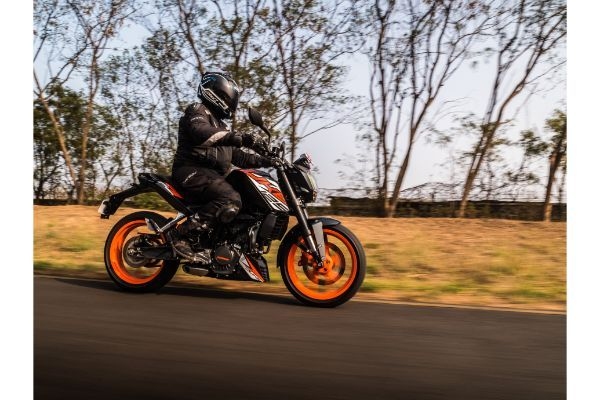
KTM has unveiled the baby duke into the Indian market at Rs. 1.40 lakhs.
Read More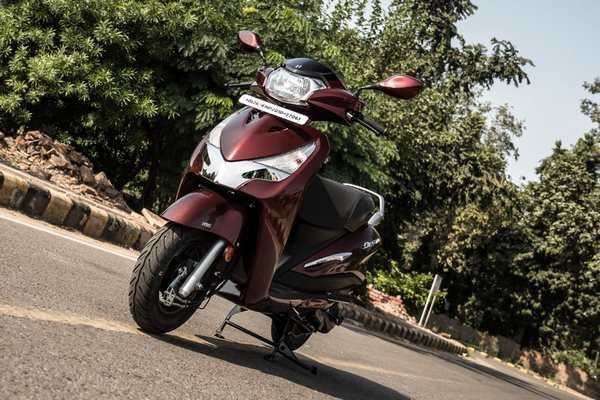
The Destini 125 is Hero's first scooter in this segment. The scooter gets its styling from the Maestro Edge and Duet.
Read More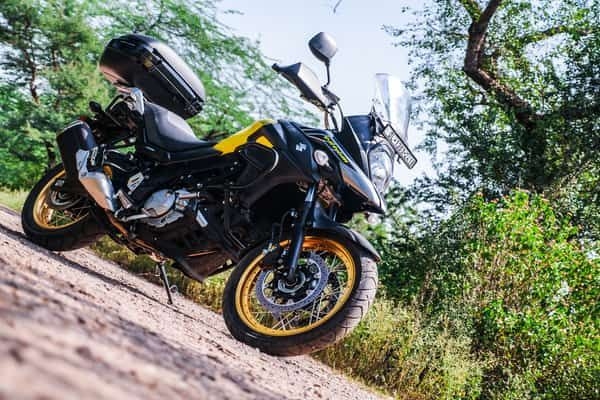
The Suzuki V-Strom 650XT is an adventure-sports-tourer that is very much inspired from its elder sibling the V-Strom 1000.
Read More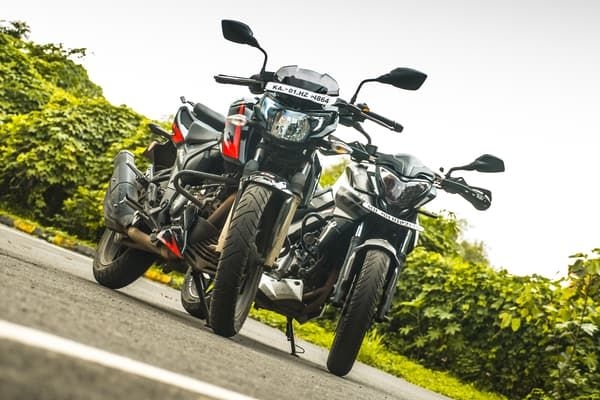
We have put the street fighters TVS Apache RTR 200 4V Race Edition 2.0 ABS and Bajaj Pulsar NS 200 in a head to head battle. Let's see who fares better at the end.
Read More